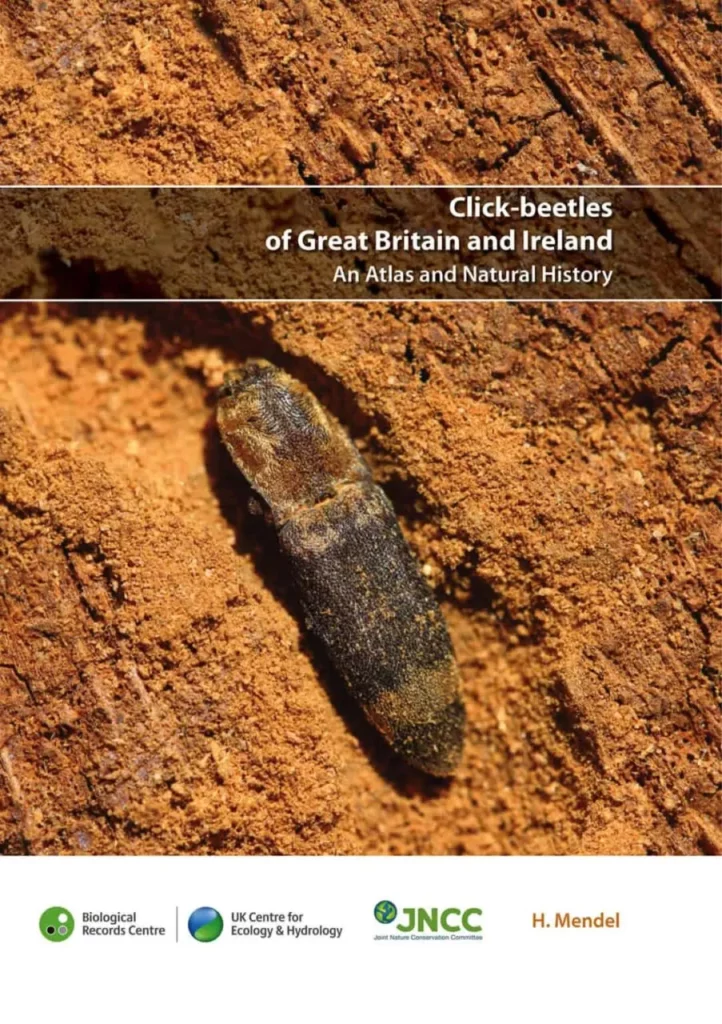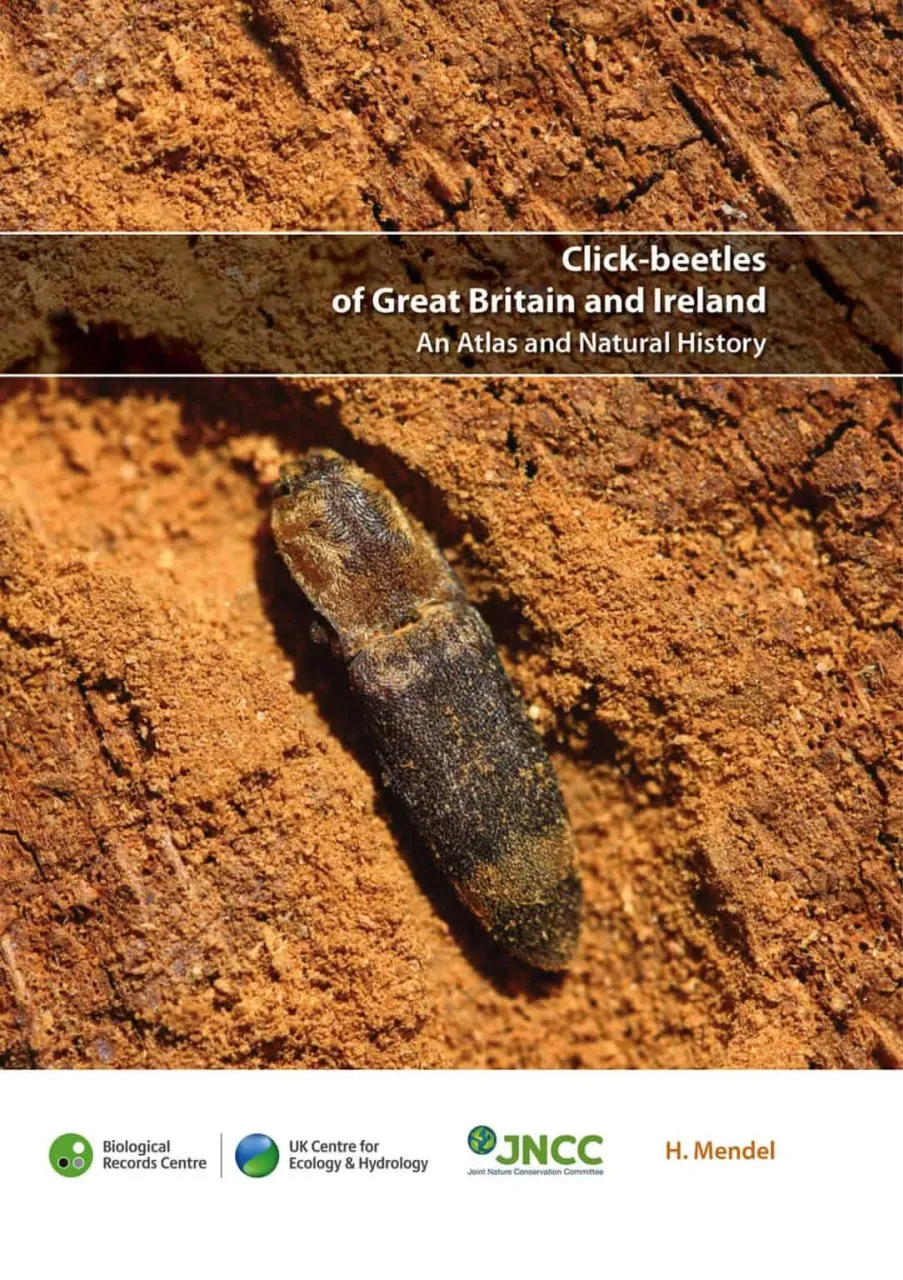Finding your first click beetle can be one of the formative experiences for a young coleopterist. These beetles jump out of your tray, never to be found again, and click furiously even when you have them safely held in your fingers. Despite their attractiveness, they can be frustrating to study and to identify. The keys in Joy’s Practical Handbook of British Beetles were difficult to use, and since its publication some species have been added to the British list, and names have been changed. Fortunately, the modern keys in Duff’s Beetles of Britain and Ireland are updated and much better. Identification aside, there are challenges for anyone who seriously wants to study this group, as many species are rare, being confined to ancient woodlands and old-growth decaying timber, some having only a very few known British sites.
The author, Howard Mendel, is recognised as one of the leading authorities on the group, which comprises the families Eucnemidae (eight species), Throscidae (seven species) and Elateridae (69 species). The book brings together much that is known about the life histories and distribution of each species. The format is similar to other recent books from the FSC, such as Lane et al.’s Histeridae, Sphaeritidae and Silphidae volume, with a section for each species showing distribution and natural-history information. The distribution maps are conveniently dot-coded so that recent records can be distinguished from older or historical records. As the book evolved from the earlier Provisional Atlas of the Click Beetles of Britain and Ireland, much of the content is focused on distribution, and the author has critically examined many records, especially historical ones. Records are also tabulated on a vice-county basis, which will be helpful to vice-county recorders or anyone interested in what occurs on their ‘patch’.
Unlike some volumes in the series, the book does not contain keys, as it is not intended to be an identification guide. Each species description, however, does give some very helpful hints on separating similar species, noting rare colour forms and highlighting possible areas of confusion. The author states that the book is primarily an atlas, although there is actually much more here. Introductory chapters cover the development of the historical literature concerning click beetles in Britain, a taxonomic checklist of species, and a detailed description of habitats, these illustrated with photographs which really give an impression of the nature of the habitat. Many click beetles are extremely fussy about their habitats, which is one of the main reasons why some species are scarce. There is a chapter on natural history, life cycles, feeding, and parasitism, and one on collecting (including rearing of larvae) and specimen curation. Much of this information is, of course, valuable for a wider range of saproxylic species beyond click beetles.
Anyone recording this particular group of beetles will find this to be a very useful text. With many of the more specialist habitats under threat, and distributions constantly shifting (and in some fortunate cases expanding), there has never been a more important time to monitor the state of our beetles.

